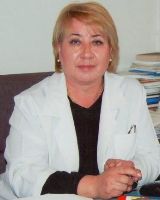RHINOSINUSOGENIC ORBITAL COMPLICATIONS IN CHILDREN
DOI:
https://doi.org/10.54890/1694-8882-2025-2-71Abstract
This article presents the results of a retrospective analysis of the study of clinical and laboratory data of children with orbital complications of rhinosinusitis. The analysis showed that the greatest number of orbital complications occur in the younger group of children (1-7 years) - 72 (48%) patients, with acute sinusitis with complications, complaints were of increased body temperature, eyelid edema, headaches, and with chronic - chemosis and decreased vision prevailed. The most frequently detected growth of Staphylococcus aureus (45%). The analysis showed that timely initiation of treatment resulted in complete restoration of vision in almost all patients. In 1 patient with acute pansinusitis complicated by orbital phlegmon, vision in the right eye was not restored (the patient came on the 5th day after the onset of the disease). The effectiveness of the therapy conducted in rhinosinusogenic orbital complications depends on the correct etiotropic treatment. Determination of the species composition of microflora and its sensitivity to antibiotics is key. According to some authors, complex conservative treatment with the use of a lymphotropically sensitive antibiotic reduces surgical treatment of patients with rhinosinusogenic orbital complications.
Keywords:
orbital complications in children, chemosis, orbital phlegmon, non-purulent orbital complicationsReferences
1. Абдуллаев Х.Н., Хасанов С.А. Актовегин в комплексном лечении орбитальных риносинусогенных осложнений у детей. Фармацевтический вестник Узбекистана. 2008;2:62-64.
2. Богомильский М.Р., Чистякова В.Р. Клиническая эффективность препарата дурацеф при воспалительных заболеваниях ЛОР-органов у детей. Вестн. оториноларингологии. 2001;1:27-29.
3. Bailey BJ, Johnson JT, Newlands D, eds. Head and Neck Surgery - Otolaryngology. 4th ed. Philadelphia: Williams & Wilkins; 2001. 3024 p.
4. Ибраева С.М., Аймухамедов А.И., Абдуллаев Х.Н. Результаты инструментальных методов диагностики в распознавании синуситов с орбитальными осложнениями. Журнал биомедицины и практики. 2021;1(3/1):247-254 Journal of Biomedicine and Practice. 2021, vol. 6, issue 3, pp. 247-254. https://doi.org/ 10.26739/2181-9300-2021-3-37
5. Beech Th. Paediatric periorbital cellulitis and its management. Rhinology. 2007;45:47-49.
6. Noordzij JP, Harrison SE, Mason JC, Hashisaki GT, Reibel JF, Gross CW. Pitfalls in the Endoscopic Drainage of Subperiosteal Orbital Abscesses Secondary to Sinusitis. American Journal of Rhinology. 2002;16(2):97-101.
7. Изаева Т.А., Мадаминова М.А. некоторые аспекты комплексного лечения отогенных внутри черепных осложнений. Медицинские кадры ХХI. 2006;2:104-107.
8. Кравченко Д.В., Переходенко О.Г., Кравченко В.Ф. Гипербарическая оксигенация в комплексном лечении риногенных воспалительных орбитальных осложнений: Материалы Российской конференции оториноларингологов. М.; 2002:230-231
9. Насыров В.А., Песин Я.М., Изаева Т.А. Лимфотропная терапия в комплексном лечении больных с отогенными внутричерепными осложнениями. Вестник КРСУ. 2007;7(2):142-146.
10. Хасанов С.А., Мухитдинов У.Б., Норалиев Р.Б. Лечение гнойных фронтитов у детей методом мягкого зондирования. Российская ринология. 2004;3:36-38.
11. Сергеев М.М. Системный воспалительный ответ при осложненных риносинуситах у детей: Матер. XVII съезда оториноларингологов РФ. СПб.: РИА=АМИ; 2006:482.







